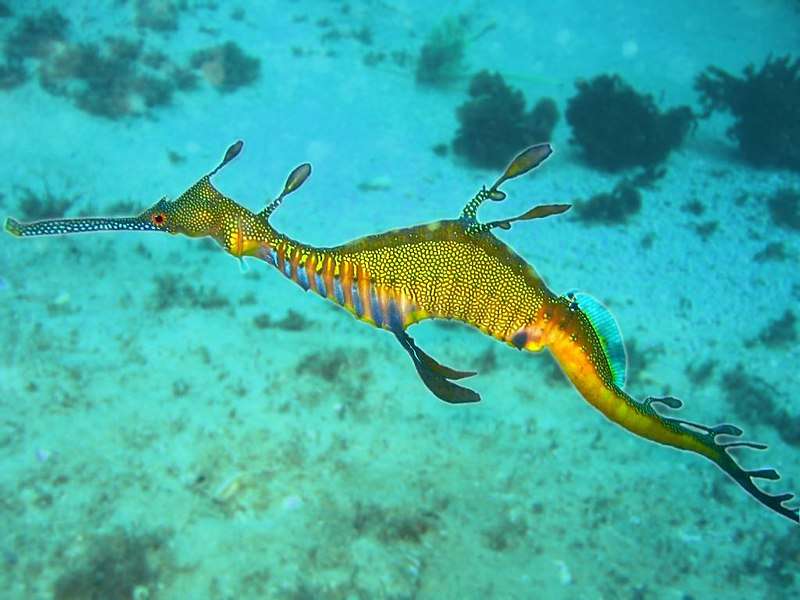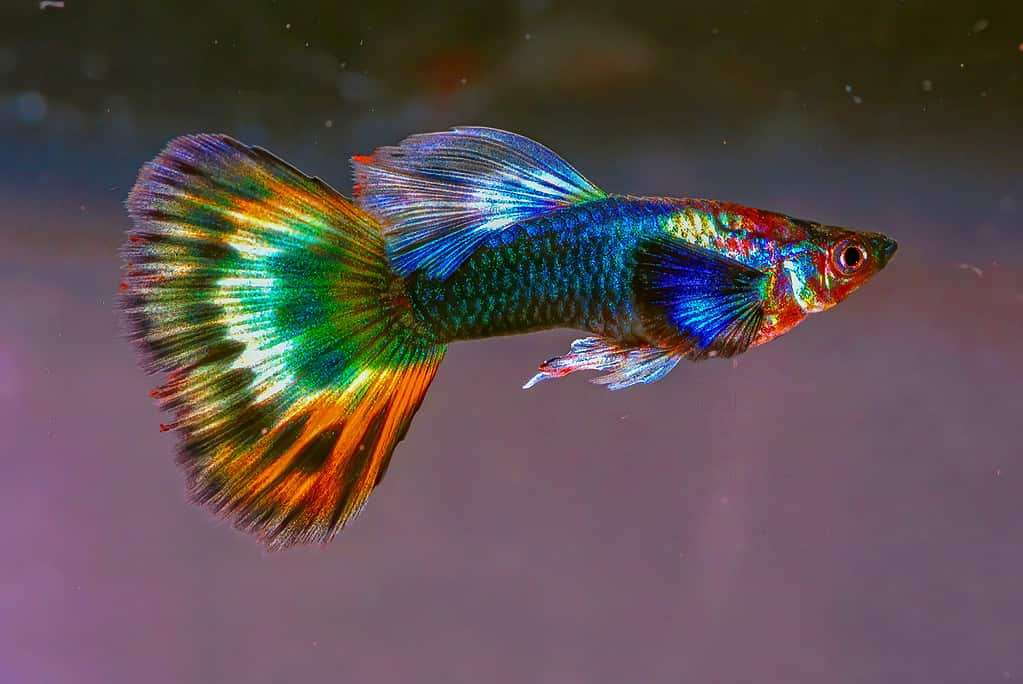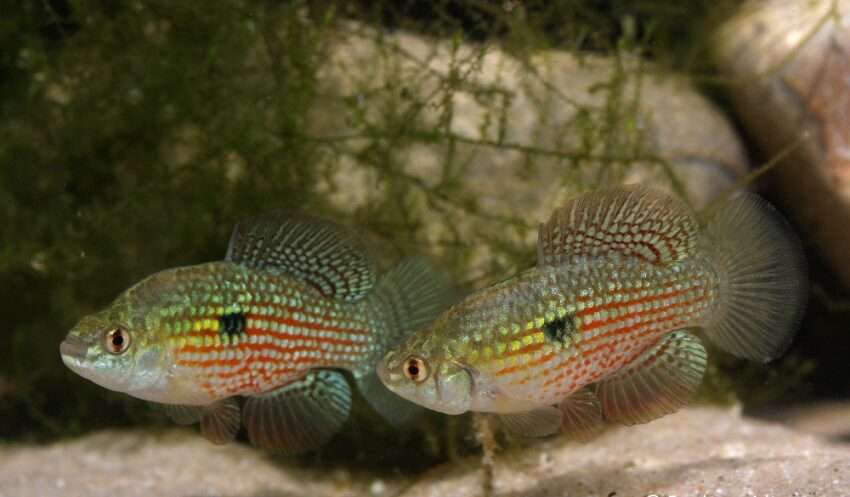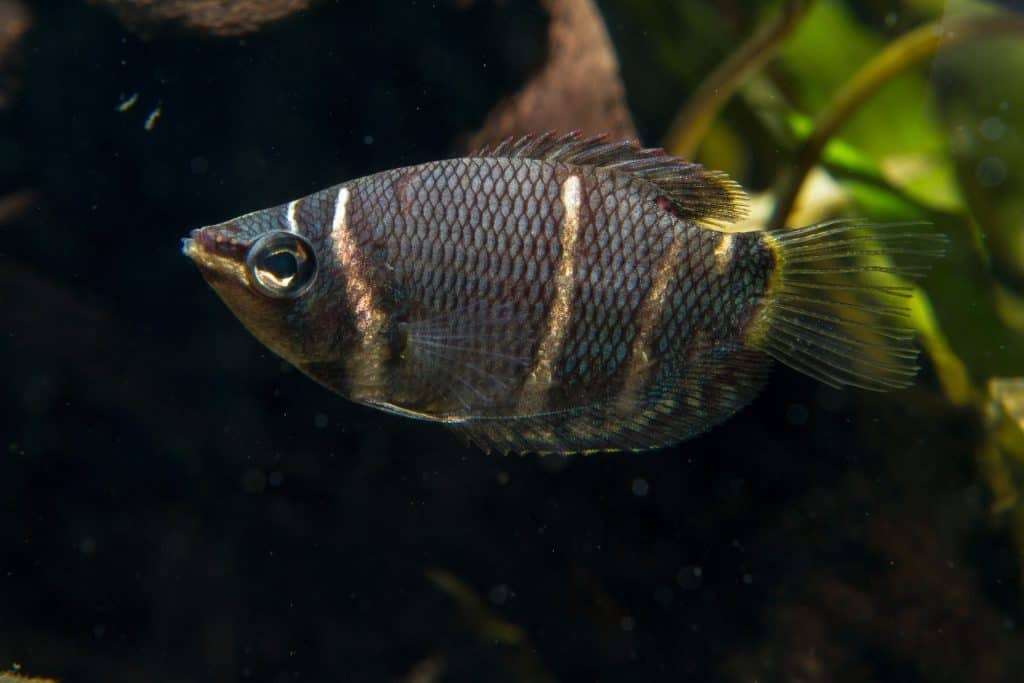
Size
6 cm (2.4 in)
Physical Characteristics
These fish have a flat, oval-shaped body, a short head, and pointed mouth, just like many gourami species. The dark chocolate brown hue of this gourami, which can sometimes be slightly reddish or greenish brown, is what gives it its common name. Across the body, there are three to five vertical yellow-white stripes. The caudal fin has a tiny fork, and the long, yellow-edged fins are also present.
Temperament
Chocolate gouramis are tropical freshwater fish that are known for being kind and quiet. These fish should only be kept by owners who are prepared to provide this species the unique care it needs. This is an interesting fish to keep, despite its strict needs for tankmates, nutrition, and water quality.
Habitat
primarily lives in peat bogs and the nearby black water streams, but is also found in other areas with clear water. The former are found in wooded areas and have water that is usually tinted a dark brown color from humic acids and other compounds generated from decomposing organic matter.
Keeping as Pet
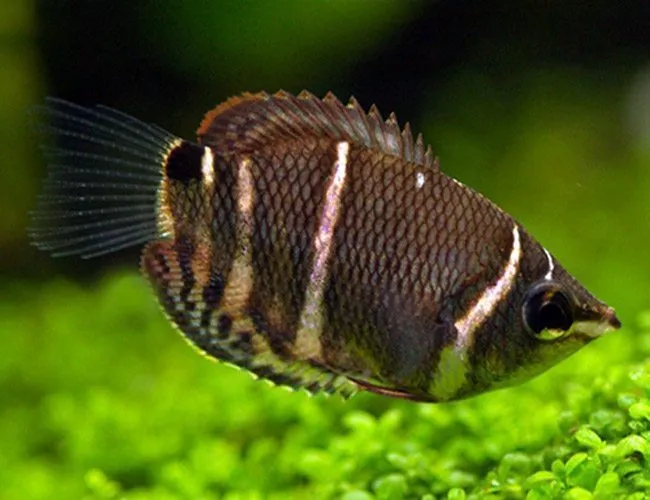
- Tank Size
The recommended tank size for chocolate gourami is at least 30 gallons. It is advised to keep Chocolate Gourami in groups of six or more because they are social fish that thrive in social environments. Despite the fact that they are not particularly huge fish, this is one of the arguments against keeping them in aquariums less than 30 gallons.
- Water Parameters
Temperature: between 26 and 31 °C
pH: In order to flourish, wild species need a value between 4.0 and 6.5, although tank-raised individuals are typically more tolerant.
Hardness: For wild fish, 0 to 54 ppm; for captive-bred fish, up to 10°.
- Feeding
The chocolate gourami is an omnivore and will eat almost everything. But, in order to stay healthy, they need a diet that is well-balanced. Together with meat-based diets, algae-based flake foods are needed. When you can, feed them little live meals. Freeze-dried or frozen brine shrimp, mosquito larvae, or daphnia are also suitable possibilities.
The female needs to be well-fed before attempting to spawn because she can spend up to two weeks without nourishment while she is caring for the eggs. For breeder conditioning, live meals are recommended, as well as high-quality, pellet food or algae-based flake.
- Tank mates
Because of its slow movement, this species is easily intimidated by or outcompeted by larger or more obnoxious tankmates for food. Peaceful cyprinids like danios, smaller rasboras like the harlequin rasbora and eye-spot rasbora, or some loaches, such the kuhli or mini royal loach, are potential tankmates. Although discus require similar water conditions and maintenance, several owners have discovered that they make good discus companions.
Groups of six or more gouramis should be kept in larger tanks since gouramis can be extremely hostile towards one another. These fish typically thrive in couples or schools of their own species. Outsiders may not be accepted because they often dwell in family groupings, although they are typically tranquil with other small, delicate fish.
Table
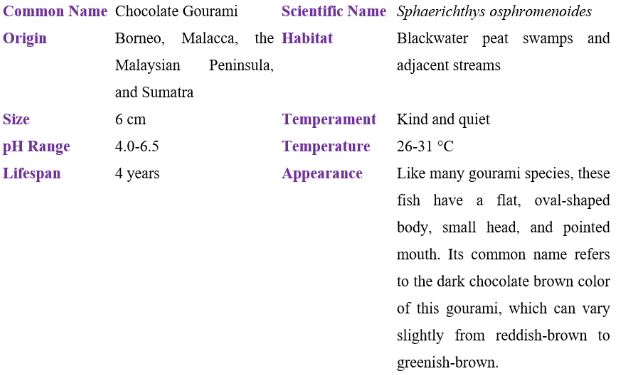 `
`


